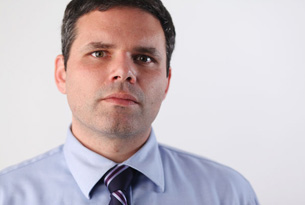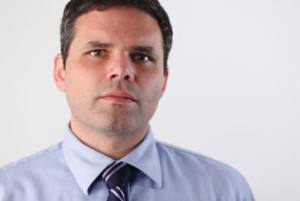Latino Activist to Head EPA’s Enviro Justice

 By Brett Israel, New America Media
By Brett Israel, New America Media
NAM Editor’s note: The U.S. Environmental Protection Agency is turning to a Houston activist to lead the fight against environmental injustices around the country. Matthew Tejada has been tapped as the EPA’s new Director for the Office of Environmental Justice. As executive director of the Air Alliance Houston for five years, Tejada fought against pollution in poor neighborhoods surrounding Gulf Coast ports.
Expected to begin his new role in early March, he’ll have no shortage of challenges ahead. As EHN’s series, Pollution, Poverty, People of Color, highlighted last summer, a legacy of lingering environmental problems and new dangers are jeopardizing people of color in low-income communities nationwide.
The pollution problems Tejada faced in Houston and along the Gulf Coast are some of the nation’s most serious. Low-income neighborhoods near the Ship Channel, which connects Houston to Galveston Bay, have been plagued with air pollution from oil refineries, chemical plants and the shipping industry. Children living within two miles of the Ship Channel have a 56 percent higher risk of childhood leukemia than those more than 10 miles away, according to one study. The Houston area also has some of the nation’s worst smog.
EHN spoke with Tejada to find out if he, as one activist wonders, “has the guts” for the job.
 Environmental Health News: Thanks for speaking with us, Dr. Tejada. What will be your role as the EPA’s new Director for the Office of Environmental Justice?
Environmental Health News: Thanks for speaking with us, Dr. Tejada. What will be your role as the EPA’s new Director for the Office of Environmental Justice?
Tejada: Since Lisa Jackson has been administrator of the EPA, they have systematically gone through what environmental justice means within the agency, and also what environmental justice means outside of the agency, and tried to fill in some very important gaps, whether it be permitting or enforcement or different sorts of rule-making, to make sure environmental justice had its requisite chair at the table. I see it as my job to get in there and make use of these new rules or these new positions for environmental justice in decision-making processes, really implementing the fundamental groundwork that’s been laid over the past several years.
EHN: “Environmental justice has had a very ambiguous place within the federal bureaucracy, and it doesn’t have a very clear line of authority.” Do you see any hurdles ahead as you make the switch from activist to government official?
Tejada: I think that’s really one of the considerations they made in going for somebody with my background. Environmental justice has had a very ambiguous place within the huge federal bureaucracy, and it doesn’t have a very clear line of authority. So it’s really going to take somebody that’s hopefully going to be given the room to advocate for environmental justice within the agency and within the federal government.
I think that’s part of why my candidacy was eventually successful is they feel like I can be a very reasonable but effective advocate for environmental justice issues throughout the EPA and, hopefully, throughout the federal government.
EHN: The term “environmental racism” has been around for 30 years. How do you feel about this term and what can be done about it?
Tejada: I think it’s obvious that there is still environmental racism that exists in the United States. Acknowledging that is the first step. This does occur in the United States, and will continue to occur in the United States, until we really take a holistic view of the impacts from industry or transportation or from trade.
Houston, where you work today, has had decades of problems, like many communities near large petrochemical facilities. Yet emissions near the Ship Channel remain high and there is a large risk of childhood cancer, asthma and other public health problems. What needs to be done here and in other communities that are near giant petrochemical complexes?
Anytime where we can push the envelope on actually measuring and monitoring emissions from major facilities offers us a real win-win-win scenario. Facilities become much more efficient, the company removes a lot of liability, plus we remove a lot of pollution from the air. When we do have pollution events there’s a higher likelihood that first responders and citizens will be better informed about what’s going on and what sort of actual risk there might be in their community.
EHN: How has working in Houston prepared you to lead the EPA’s environmental justice office?
Tejada: Whether it’s big national ambient air quality standards or toxics or health, the Gulf Coast — particularly the Texas and Louisiana Gulf areas — are really the crucible of a lot of these issues. We have the largest challenges, the most diverse challenges, the largest number of people that are suffering negative health impacts for the longest period of time, going back to the beginning of the 20th century.
“I think it’s obvious that there is still environmental racism that exists in the United States. Acknowledging that is the first step.” That’s not to discount any challenges that folks in other parts of the country have. But I couldn’t be more well-prepared to move up and start looking at the entire suite of environmental justice communities around the United States than to have had this experience in Houston and the Texas Gulf Coast.
EHN: What is something unique about your background that will help you succeed at the EPA?
Tejada: With my organization here in Houston we’ve always been a link between the community and regulators, and between industry and neighborhoods, and between national organizations and local groups and leaders. We’ve always played that bridging role.
EHN: At the EPA, will you be stuck behind a desk, or will you still be able to get out and work in the communities?
Tejada: I don’t know, that’s going to be interesting. There’s a whole diversity of environmental justice communities across the United States, from Puerto Rico to Alaska, so I’m really looking forward to meeting with more of those environmental justice community members and appreciating the similarities and also finding out what’s unique about them.
Poor communities of color face an array of environmental health threats, including cancer, asthma, diabetes and heart disease. What are some of the biggest environmental health threats that need more attention?
With growth of trade and ports and goods movement and logistics, diesel particulate matter is a huge issue. It’s a very difficult issue because of how well diesel engines have been made for such a long time, in terms of operation but not in terms of pollution control. There have been some really progressive steps in some parts of the country…but we’re going to see the growth of goods movement all across the United States, inland and on the coast, and we really need a lot more attention paid to the fact that this diesel particulate matter is going to be a growing problem for communities that are already facing a lot of threats from traditional sources like refineries and chemical plants.
Something else that we’re paying an increasing amount of attention to…is the reclamation of metals and of precious metals from shredding and recycling facilities. Those are facilities that, not all the time, but more likely than not, are located in or near environmental justice communities. And they’re not very well regulated at any level.
If we do not learn any lessons from the past about the creation of environmental justice communities…we’re going to create new ones. We really have to be prospective (proactive?) in dealing with environmental justice communities, to make sure we don’t make our problem even worse by adding more communities to the list.
EHN: The EPA commissioned a work group to recommend a plan to reduce air pollutions from ports. The report came out in 2009, and critics have called the EPA’s response to it disappointing. Will you make ports an environmental justice priority?
Tejada: That’s something that we’ve been highlighting. I’ve been working with port communities here in Texas and working with the Impact Project out at LA-Long Beach.
“We really need a lot more attention paid to the fact that this diesel particulate matter is going to be a growing problem for communities that are already facing a lot of threats from traditional sources like refineries and chemical plants.” We have been talking to the administrator and her office for the past year about the long-term implication of the growth in ports and goods movement, and what that means not just for those [coastal] environmental justice communities…but how it’s likely to impact other [inland] communities that could become environmental justice communities.
[In June] I went up to the EPA along with a couple of colleagues from California and New Jersey. We sat in a room with agency representatives from over a dozen federal agencies to discuss the implications of goods movement and port expansion. They set up an official working group to continue to look at that issue. So that’s definitely going to be something that needs to be a priority starting now and moving forward for the foreseeable future.EHN: The Houston area rivals the Los Angeles region for the nation’s worst ozone, a key component of smog. You helped launch a website for residents to track smog in their communities in real-time. Do you have plans to bring similar digital tools to the EPA?
Tejada: Absolutely. That’s something that I actually just had a meeting this morning with developers about. Those sorts of digital tools that are database driven, you can integrate all sorts of air quality information. Whether it’s monitor reported or citizen reported, you can take that and integrate those visualizations with epidemiological information and socioeconomic information. So for the first time, you can really start to get the tangible representation of the enormity and the complexity of the challenges facing environmental justice communities.
EHN: In an article in the Houston Chronicle announcing your appointment, Juan Parras, an activist who lives near Houston’s refineries and chemical plants, said you will need “the guts and fortitude to challenge those who need to be challenged.” Do you have the guts?
Tejada: Not only do I feel like I have the guts to speak truth, as many environmental justice leaders demand, but I feel like I can do it in a way where people will listen. And people will get that I’m not just being the squeaky wheel. If we acknowledge problems frankly we can find ways to deal with them in a much more direct manner…Hopefully we can find ways to alleviate the negative aspects of these environmental justice communities. Hopefully we can start knocking these communities off the list.
This article was first published in New America Media.
Brett Israel is a senior editor and staff writer at Environmental Health News.
[Photo by Environmental Health News]
